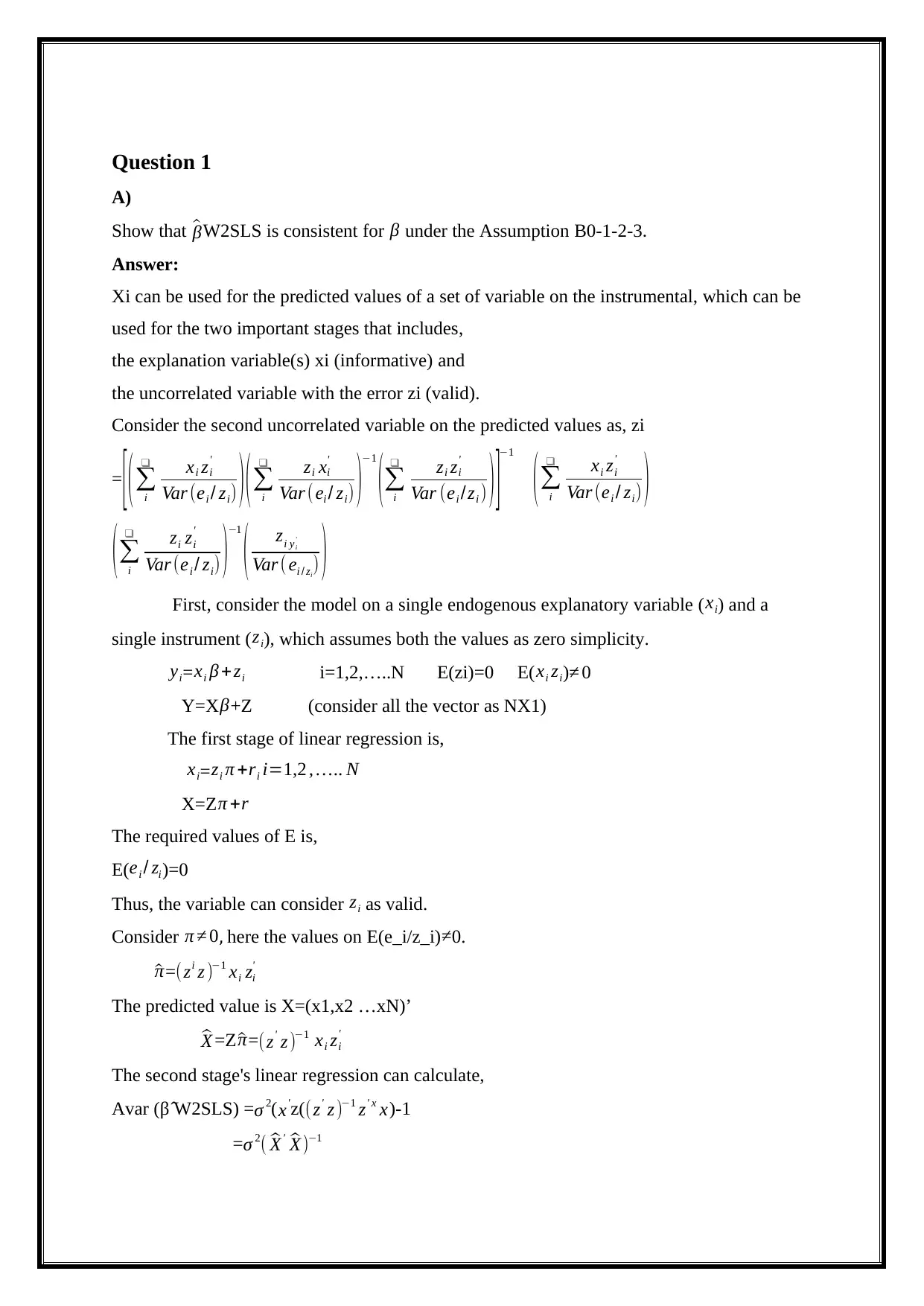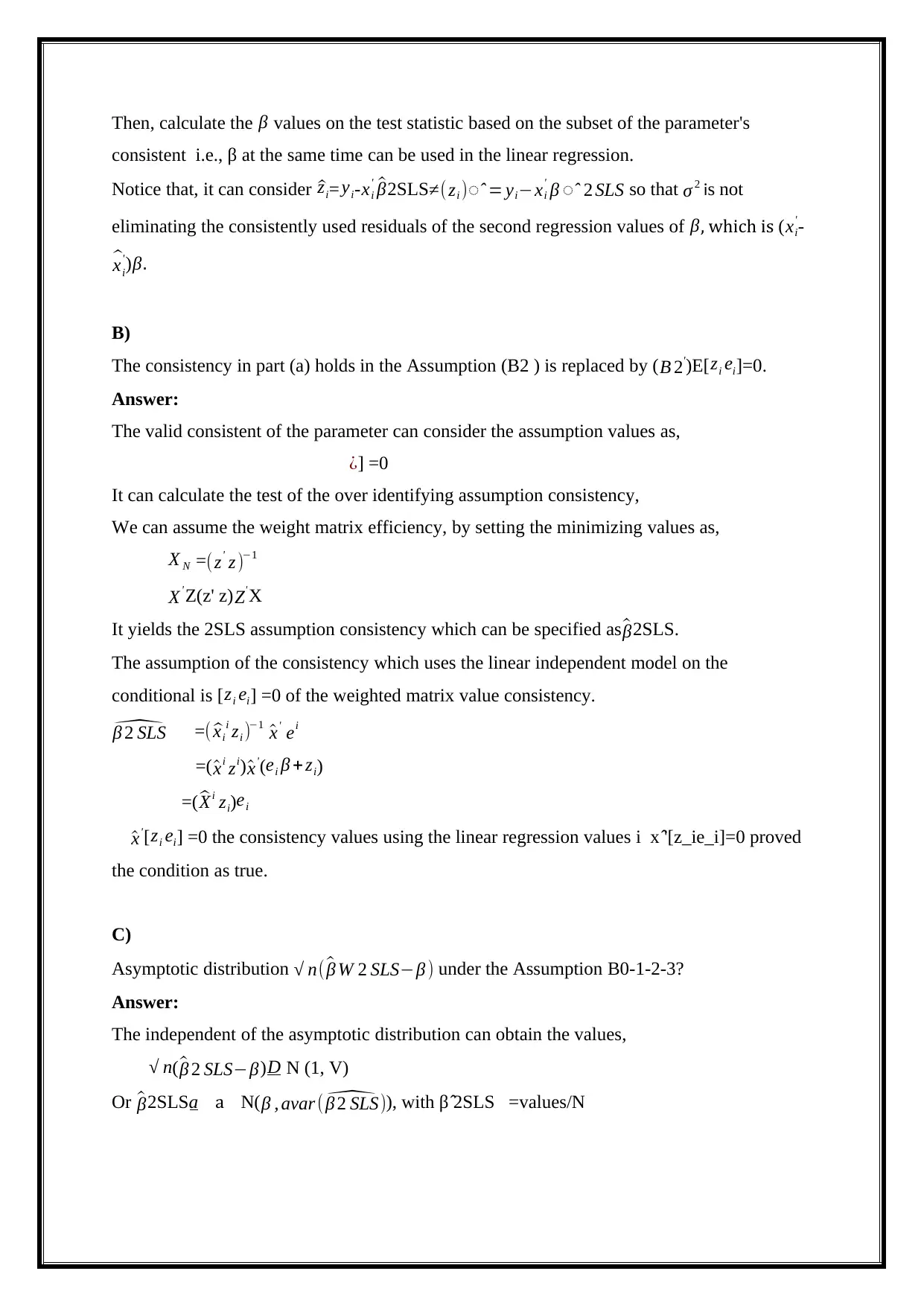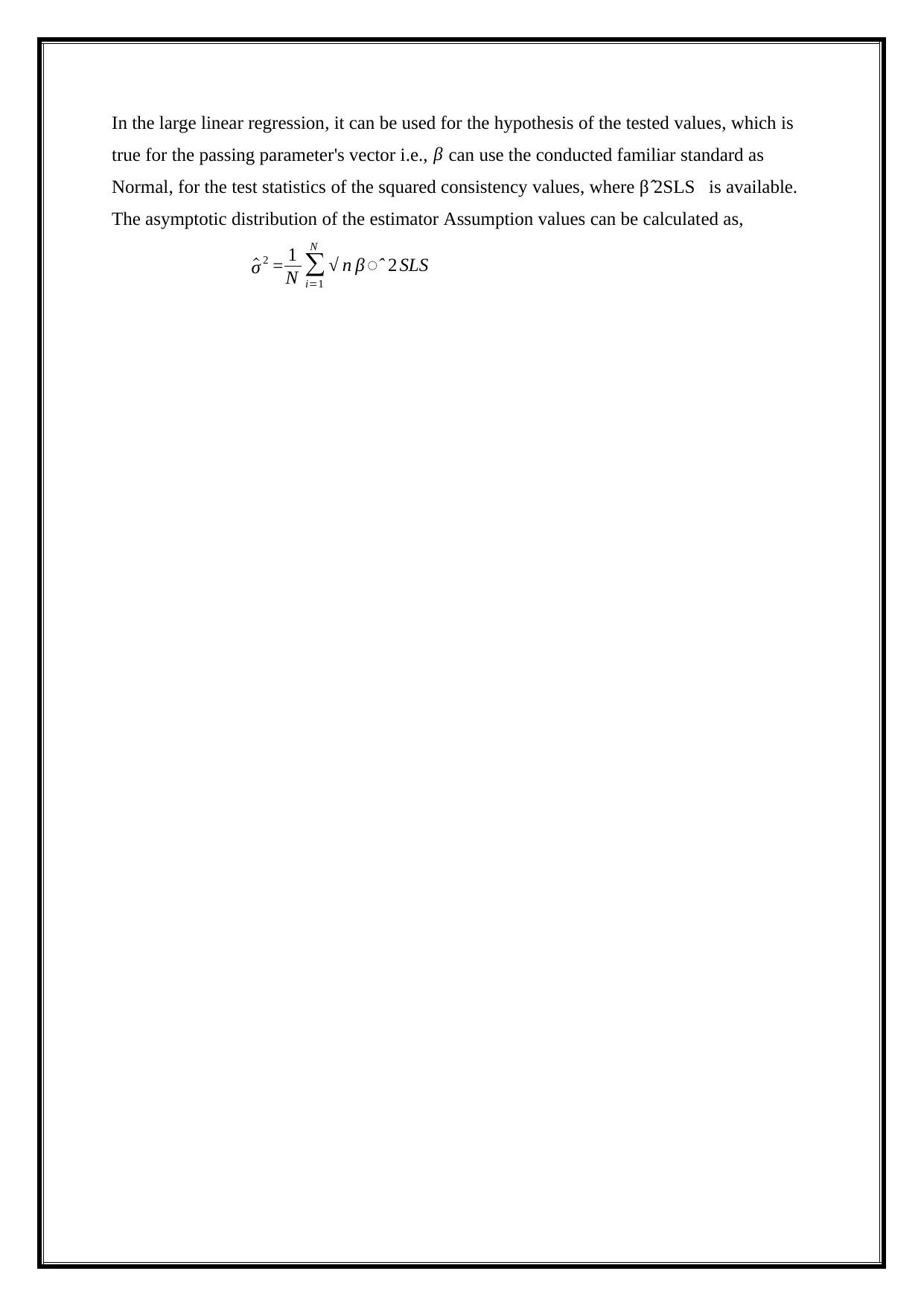Consistency of W2SLS Estimator: Analysis Under Different Assumptions
VerifiedAdded on 2023/04/21
|3
|852
|297
Homework Assignment
AI Summary
This assignment solution provides a detailed analysis of the Weighted Two-Stage Least Squares (W2SLS) estimator, focusing on its consistency and asymptotic distribution under different assumptions. It begins by demonstrating the consistency of the W2SLS estimator for β under specific assumptions, utilizing instrumental variables and two-stage linear regression. The solution further explores how the consistency holds when a key assumption is modified, emphasizing the importance of the conditional expectation of error terms. Finally, it examines the asymptotic distribution of √n(β^W2SLS−β), highlighting its normal distribution and the role of hypothesis testing in large linear regressions. The analysis includes mathematical derivations and explanations to support each conclusion.
1 out of 3










![[object Object]](/_next/static/media/star-bottom.7253800d.svg)